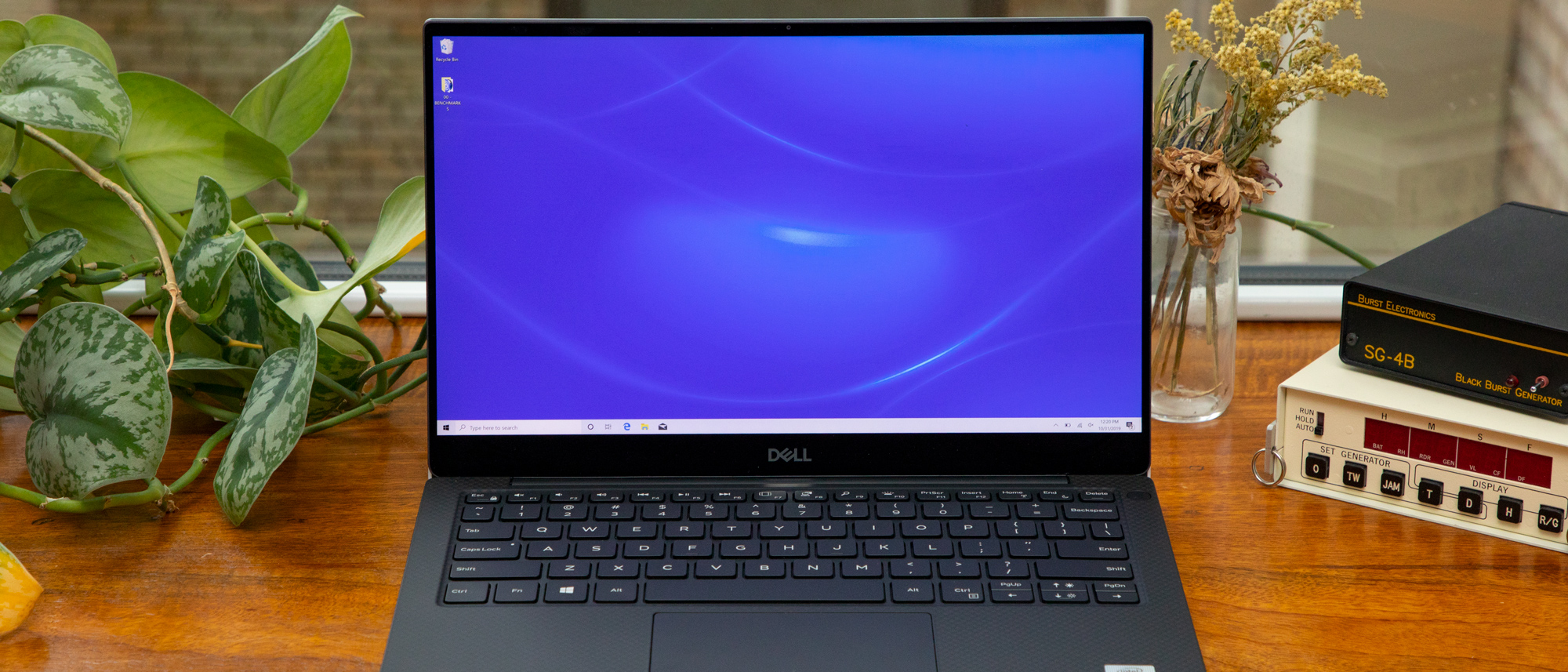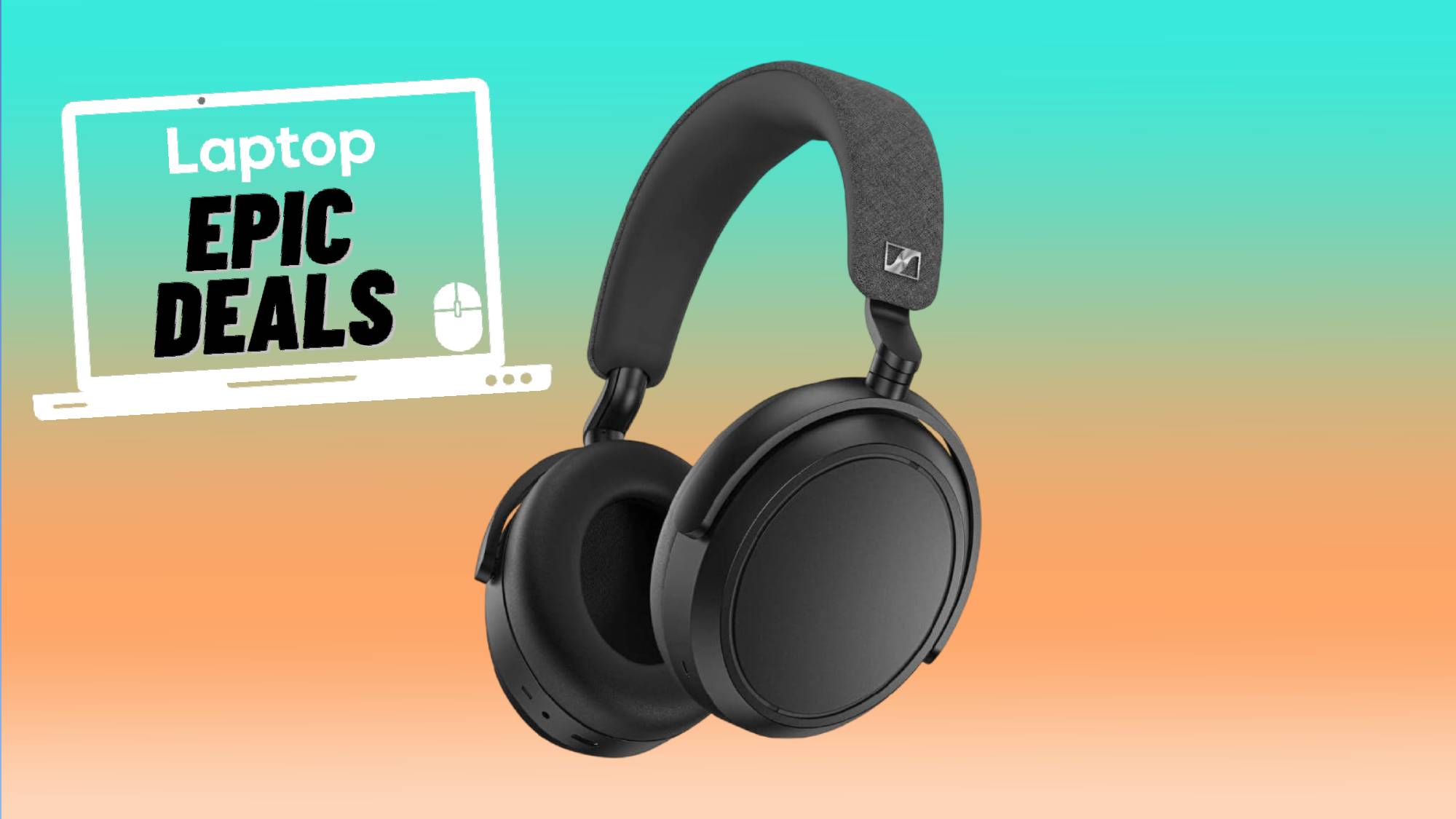Laptop Mag Verdict
Dell updated the XPS 13 with 10th-Gen Comet Lake CPUs, giving the best-overall laptop a big performance boost.
Pros
- +
Premium design
- +
Slim, compact chassis
- +
Bright, vivid 4K display
- +
Outstanding performance
Cons
- -
Below-average battery life (4K model)
Why you can trust Laptop Mag
The best laptop you can buy is now better than ever. Dell updated the XPS 13 ($949 starting; reviewed at $1,649) with 10th-Gen Comet Lake processors just in time for the holiday season. Now you get everything we loved about the previous version — a premium, ultraportable chassis, a gorgeous 4K display and a comfortable keyboard — with even faster performance.
If Dell had only improved the 4K version's battery life, which remains a notch below average, then the XPS 13 would be the perfect laptop. Regardless, the XPS 13 is the best laptop on the market for most people, although those who want a 2-in-1 should consider its sibling, the XPS 13 2-in-1.
Dell XPS 13 price and configuration options
The XPS 13 with 10th-Gen processors starts at $949 when configured with a 1080p display, a Core i3-10110U CPU, 4GB of RAM and a 256GB SSD.
We recommend spending at least $1,099 for a Core i5-10210U CPU, 8GB of RAM and a 256GB SSD. For "just" $130, you can upgrade to the six-core Core i7-10710U, which seems like a good option.
Our $1,649 review unit comes with a 4K display along with a Core i7-10710U CPU, 16GB of RAM and a 512GB M.2 PCie NVMe SSD. From there, you can go all-out and spend $2,149 on a 4K model with a Core i7-10710U CPU, 16GB of RAM and a whopping 2TB SSD.
Dell XPS 13 design
We're still smitten with the XPS 13's design. Unchanged from its predecessors, the ultraportable laptop looks elegant yet feels like a finely crafted machine.
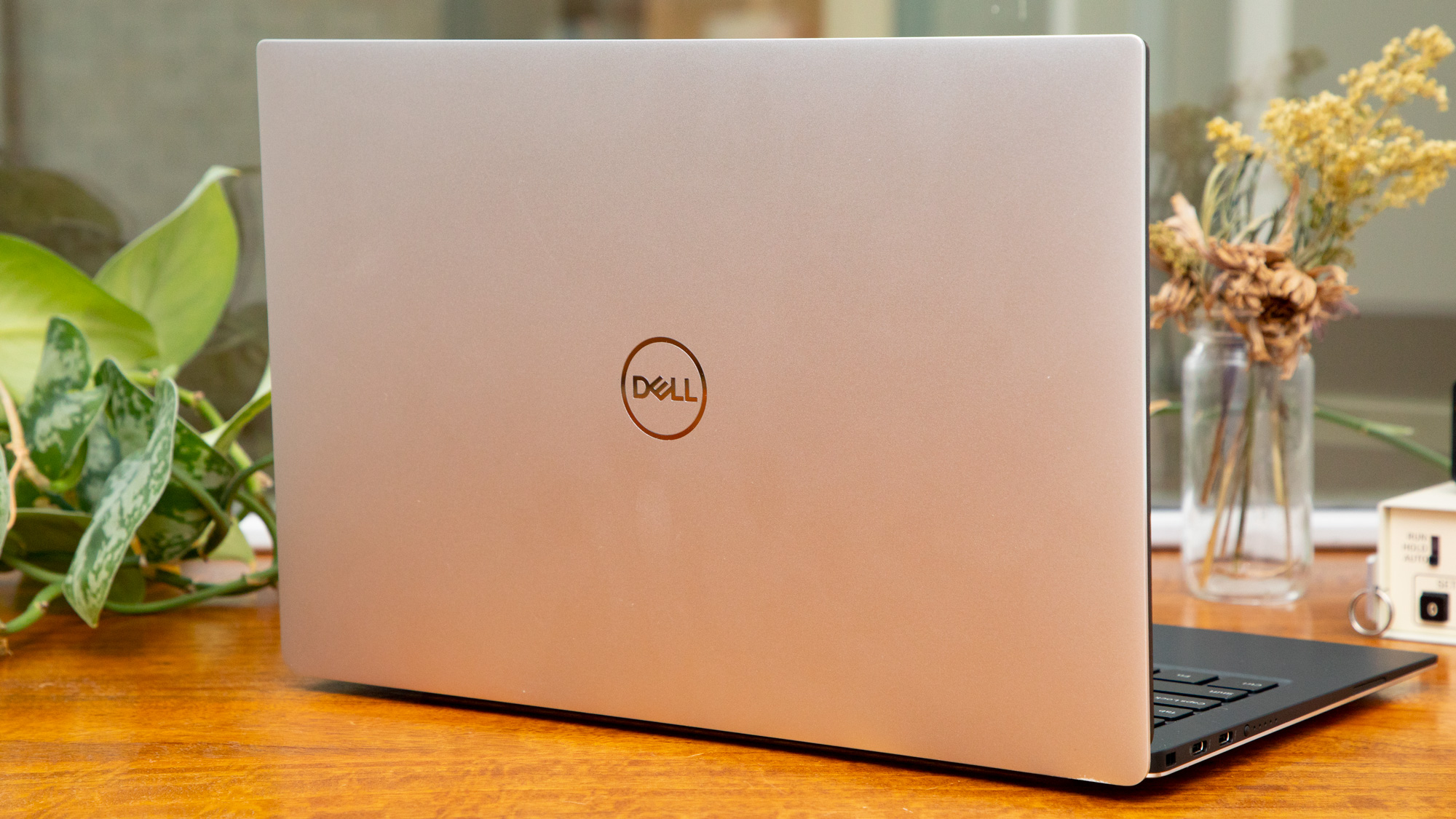
You'll understand why you spent so much on the XPS 13 when you get your hands on it. From the anodized aluminum lid and underside — cut from a single block of metal — to the plush carbon-fiber deck, the XPS 13 feels as if it were engineered in a NASA laboratory with the most advanced materials.
While no longer unique to the XPS 13, razor-thin bezels not only draw your eyes toward the laptop's gorgeous display but also reduce its footprint. Shift your eyes away from the display for a moment and you'll notice a tiny webcam above the display. Yes, the infamous nosecam is gone for good.
Below the display is a plush soft-touch carbon-fiber deck that gives the XPS 13 a stealthy appearance. Dell sent us the traditional platinum silver with a black carbon-fiber finish but the XPS 13 also comes in Frost or Rose Gold with an Arctic white woven-glass-fiber deck
The XPS 13 looks elegant yet feels like a finely crafted machine.
The XPS 13's portability can't be overstated. At 11.9 x 7.8 x 0.5 inches and 2.7 pounds, the XPS 13 is more compact and lighter than the XPS 13 2-in-1 (11.7 x 8.2 x 0.5 inches, 2.9 pounds), the 13-inch MacBook Pro (12 x 8.4 x 0.6 inches, 3 pounds) and the HP Spectre x360 (12.2 x 8.6 x 0.6 inches, 2.8 pounds).
The XPS 13 is a clamshell laptop. If you're looking for a 2-in-1 to use as a tablet, then consider the excellent XPS 13 2-in-1, a flexible version of the XPS 13 with 10th-Gen Ice Lake processors.
Dell XPS 13 ports
I'm happy with the selection of ports the XPS 13 offers.
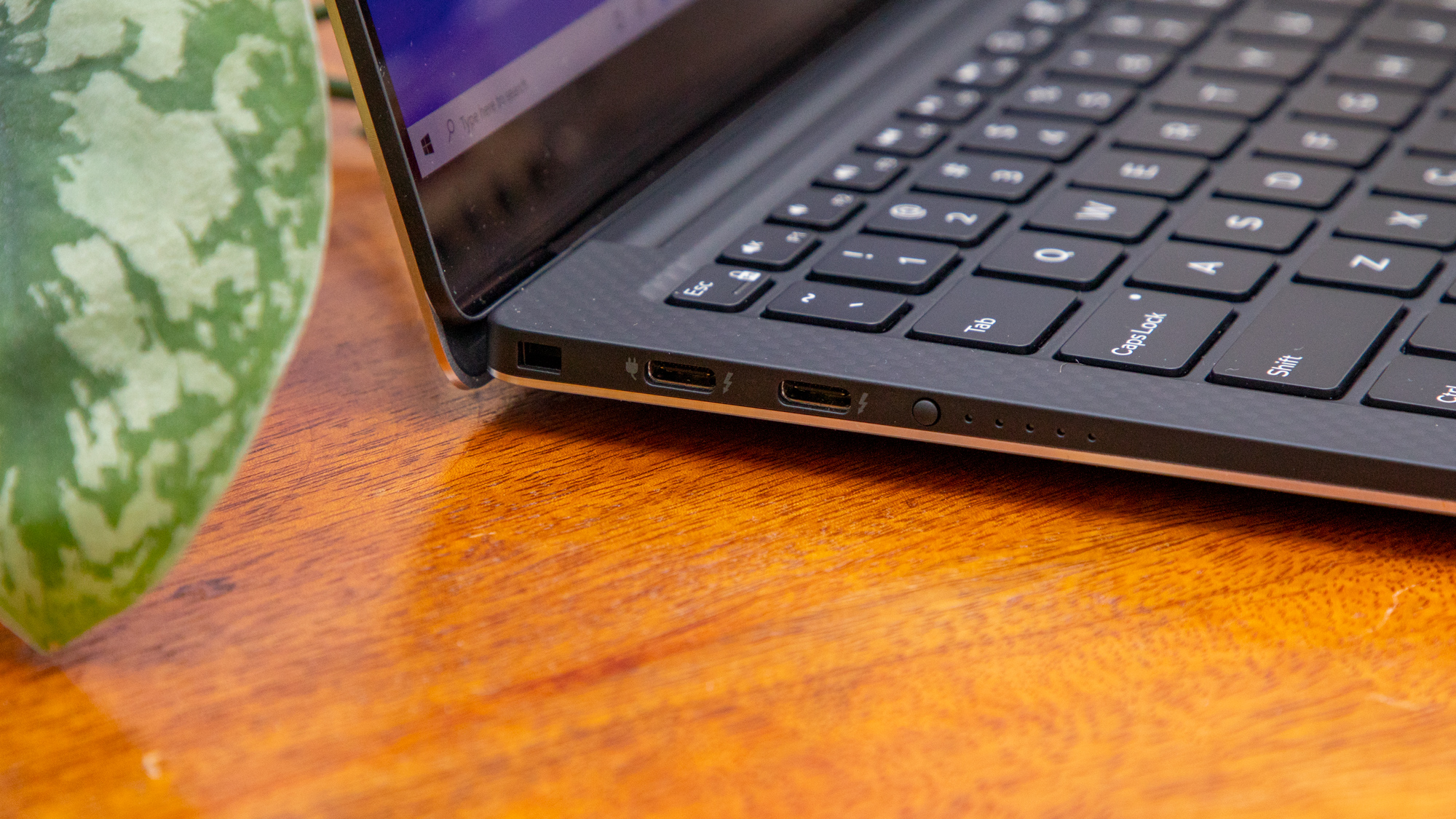
Hear me out. The XPS 13 is a superslim laptop yet it fits a USB-C port, a microSD card slot and a headphone jack on the right side along with two Thunderbolt 3 ports next to an LED battery life indicator on the left edge.
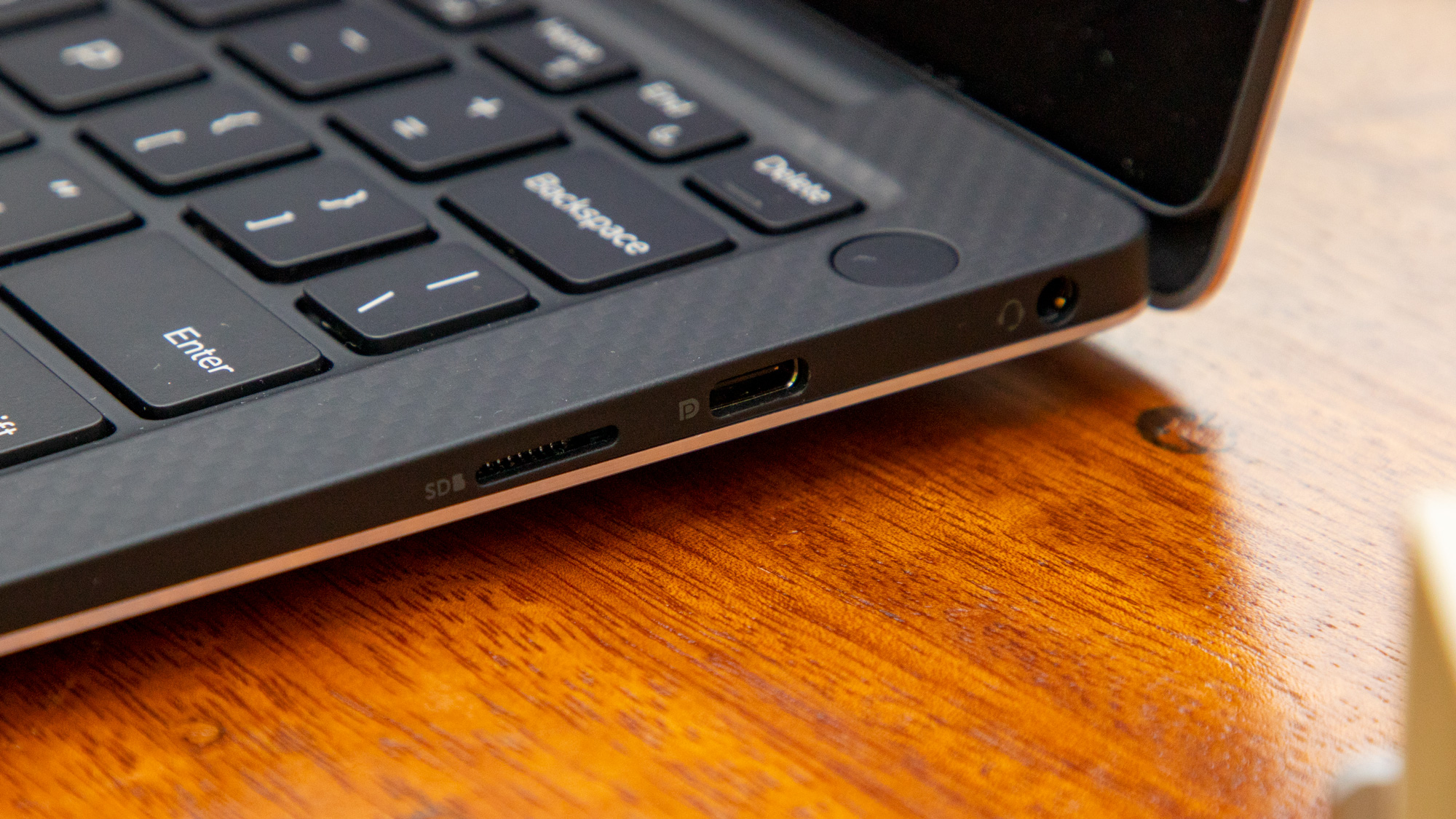
You can charge the XPS 13 from either side using any of the three USB-C ports.
Dell XPS 13 display
The XPS 13's 13.3-inch touch-screen display is available in 1080p or 4K resolutions. We tested the UHD model and were impressed by the bright, richly saturated panel.
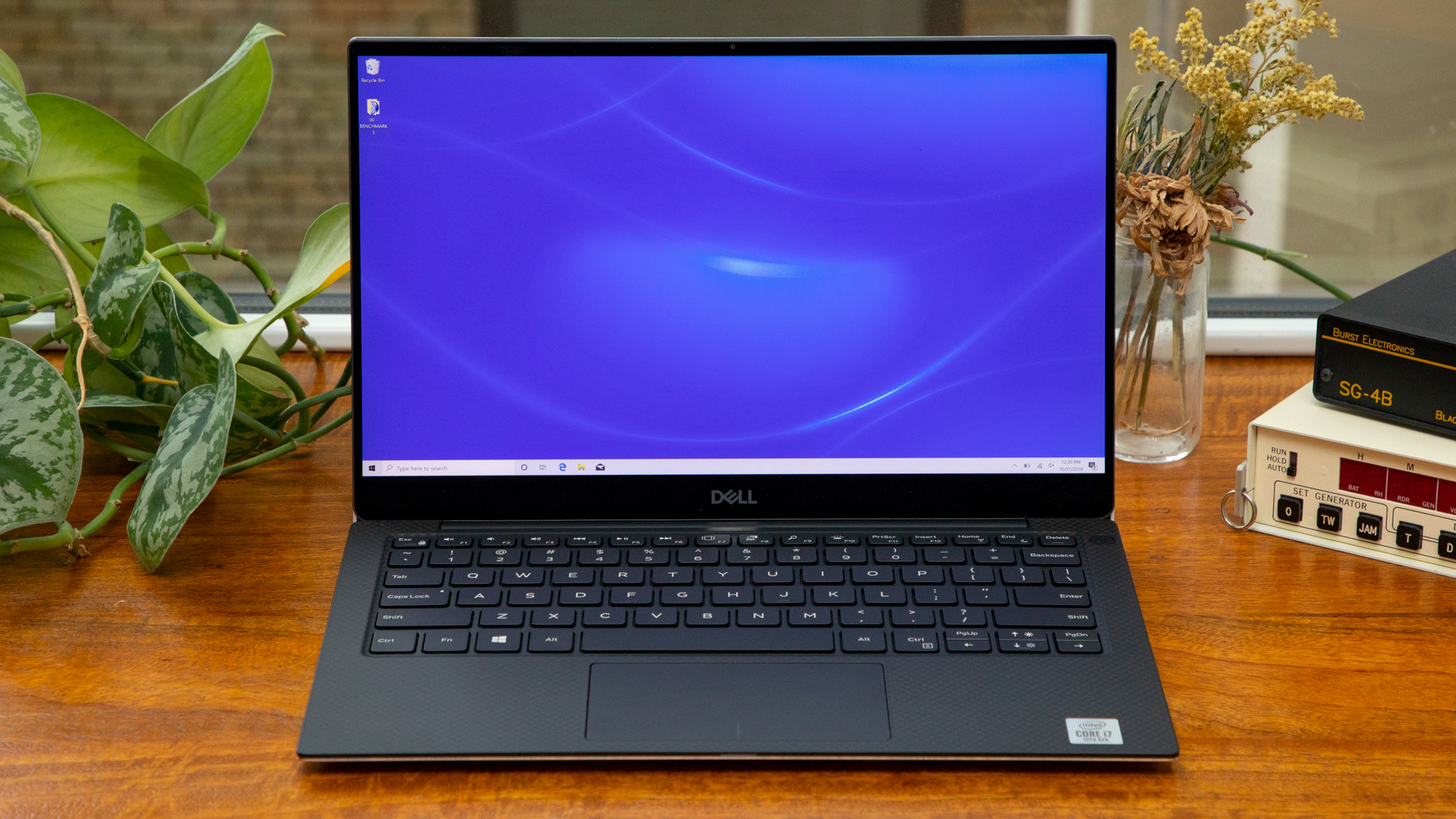
Kylo Ren's T-shaped lightsaber shone a blood-red hue in the trailer for Star Wars: Rise of Skywalker, and a jungle planet was covered in lush green tones. As expected, the 4K screen is incredibly sharp; I could see every wire dangling out of C-3PO's exposed head and a detailed shot of a Y-wing gave me a new appreciation for the level of detail that goes into these movies.
I had no problems using the touch screen to jump between websites. In fact, it was so responsive that using the on-screen keyboard to type in URLs wasn't an awful experience. The 4K panel is glossy, so consider the 1080p matte panel if you plan on using the XPS 13 outdoors.
Kylo Ren's T-shaped lightsaber shone a blood-red hue in the trailer for Star Wars: Rise of Skywalker, and a jungle planet was covered in lush green tones.
According to our colorimeter, the Dell XPS 13's 4K display covers 111% of the sRGB color gamut, making it about as colorful as the displays on the XPS 13 2-in-1 (113%) and the MacBook Pro (118%). If you want the most vivid display, we recommend the Spectre x360's 1080p panel (150%), which topped the category average (126%).
MORE: Best Dell and Alienware Laptops
The XPS 13 made up for that slightly low result by reaching 382 nits of brightness. That's bright enough to outshine the Spectre x360 (287 nits) and the category average (350 nits), although the XPS 13 2-in-1 (516 nits) and the MacBook Pro (408 nits) are even more blinding.
Dell XPS 13 performance
The laptop's new six-core 10th-Gen Core i7-10710U CPU paired with 16GB of RAM gives the XPS 13 standout performance.
I didn't notice even the slightest hint of lag when I opened 25 tabs in Google Chrome. Once they were up and running, I loaded four 1080p YouTube videos and streamed SportsCenter on ESPN's streaming site. With all that going on, the XPS 13 performed flawlessly as I surfed graphic and ad-heavy sites, moving from one link to the next.
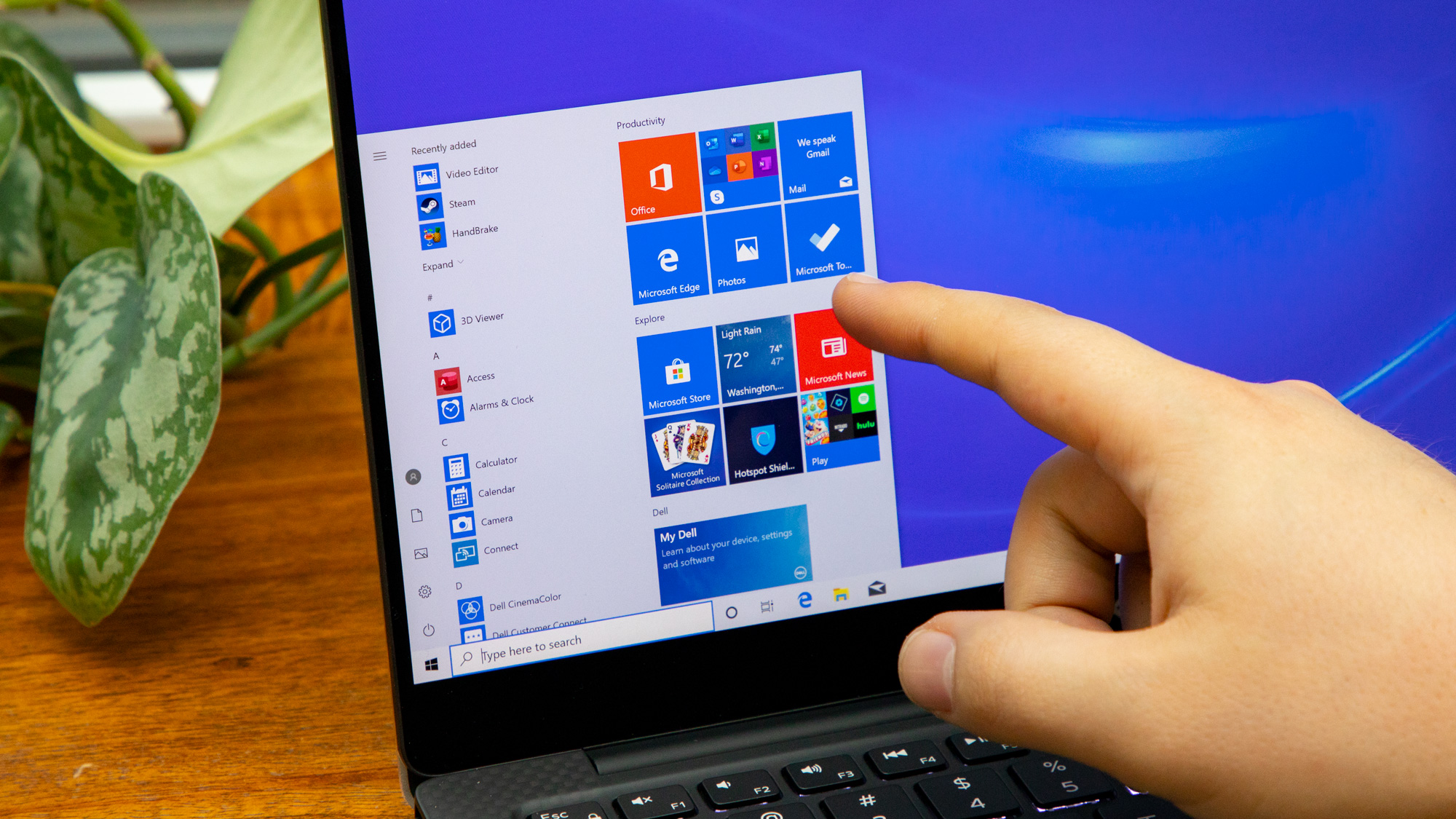
The XPS 13 is proof that Intel's new Comet Lake chips are a worthwhile upgrade. On the Geekbench 4.3 overall performance test, the XPS 13 scored a 22,492, which crushes the XPS 13 2-in-1 (19,225, Core i7-1065G7), the MacBook Pro (18,221, Core i7) and the Spectre x360 (Core i7-8565U, 14,935). The average premium laptop (14,597) scored much lower than the XPS 13.
The laptop's new six-core 10th-Gen Core i7-10710U CPU paired with 16GB of RAM gives the XPS 13 standout performance.
Those results translated to our video-transcoding test; The XPS 13 converted a 4K video to 1080p resolution in just 14 minutes and 25 seconds, outpacing the XPS 13 2-in-1 (24:49), the Spectre x360 (22:3) and the category average (22:25) by a wide margin.
MORE: Laptops with the Best Productivity Performance
The XPS 13's 512GB M.2 PCIe NVMe SSD duplicated 4.97GB of multimedia files in 7 seconds for a rate of 727 megabytes per second. That's faster than the XPS 13 2-in-1 (463 MBps, 512GB SSD), the Spectre x360 (392 MBps, PCIe NVMe M.2 SSD) and the category average (541 MBps). The XPS 13 can't, however, keep up with the MacBook Pro's (2,573 MBps, 256GB SSD) record-setting pace.
Dell XPS 13 graphics
Don't expect the same performance leaps in the graphics department. The XPS 13's Intel UHD graphics scored a 95,288 on the 3DMark Ice Storm Unlimited test, which edges out the scores of the previous XPS 13 (88,473, UHD 620), the HP Spectre x360 (90,977, UHD 620) and the premium laptop average.
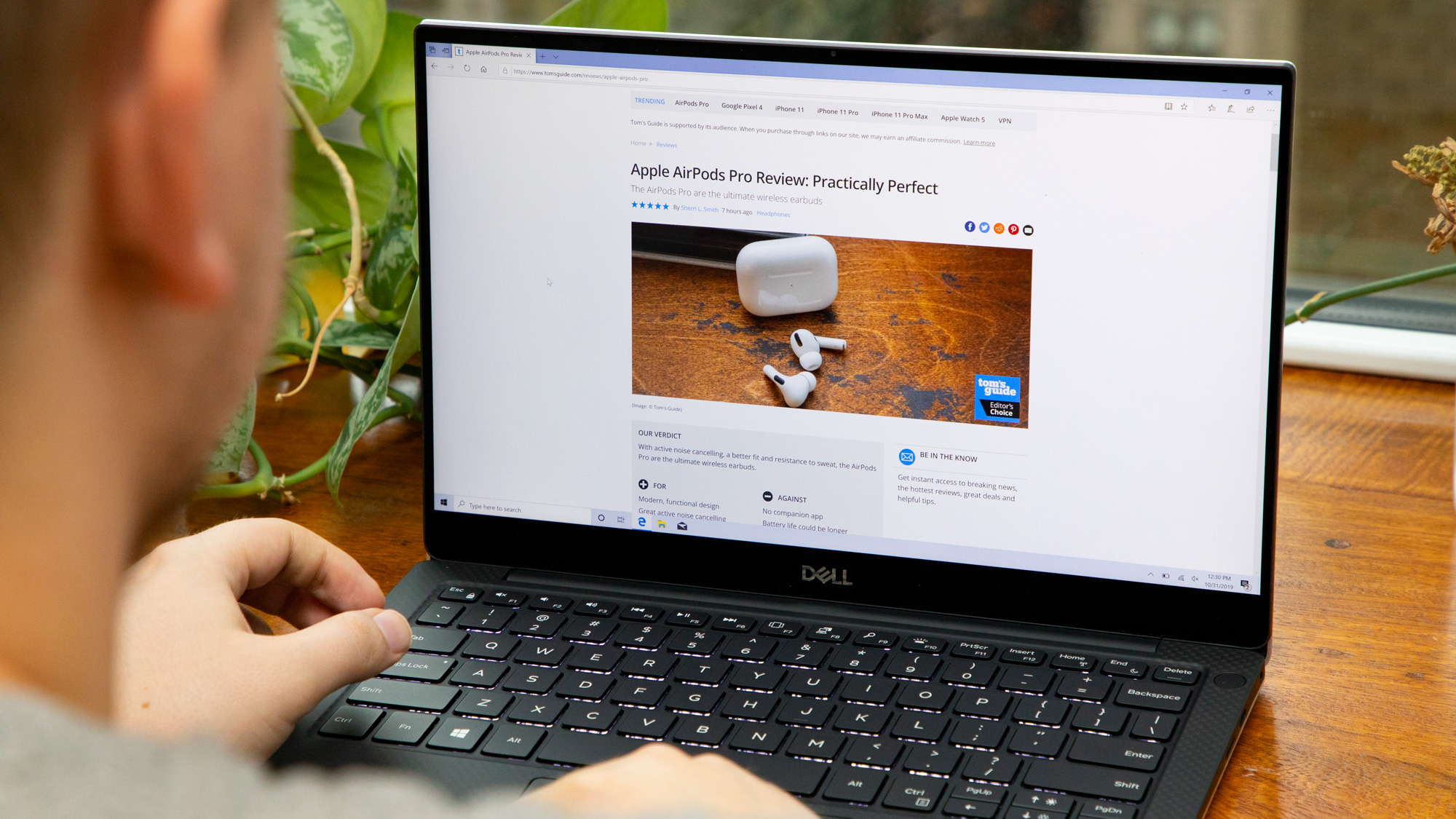
Our optimism was dashed when the XPS 13 played the racing game Dirt 3 at just 34 frames per second. That's above our 30-fps threshold but we saw higher frame rates on the XPS 13 2-in-1 (45 fps), the MacBook Pro (38 fps) and the HP Spectre x360 (56 fps). The category average (60 fps) tops all of these thin laptops.
If having powerful integrated graphics matters to you, then opt for a laptop with Ice Lake CPUs and Iris Plus graphics, like the XPS 13 2-in-1. Although, you're probably better off splurging on a laptop with a discrete GPU.
Dell XPS 13 audio
The bottom-firing speakers on the XPS 13 are a bit quiet but sound decent. When I listened to Daughters' "Youth," the vocals sounded clear but the speakers struggled to fill a medium-size room. The drums in Post Malone's hip-hop hit "Sunflower" lacked punch and Swae Lee's voice was a tad thin, but the solid clarity kept me from reaching for a pair of headphones.
Dell XPS 13 keyboard and touchpad
I'm really impressed with the typing experience offered by the XPS 13's keyboard. Thin laptops typically have shallow keys, but not the XPS 13.
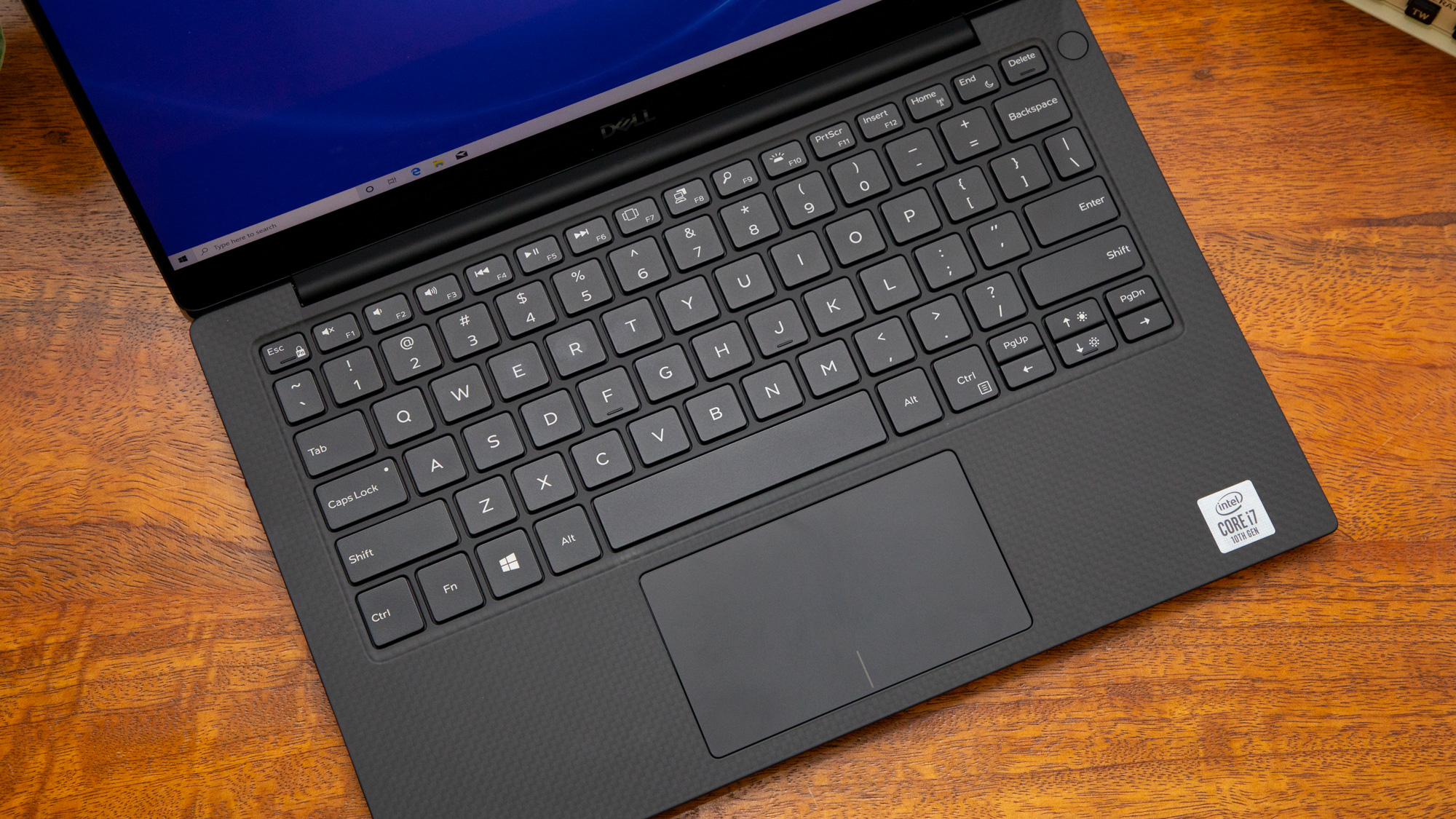
My fingers never bottomed out thanks to the keyboard's decent travel and my fingers were greeted by a softer landing than what the MacBook Air's notoriously stiff keys offer. There is also a decent clickiness to the keys, although they don't have the weighty bump I look for in a good keyboard. Dell extended the keyboard across the XPS 13's entire deck so people with larger hands shouldn't feel cramped when typing on the laptop.
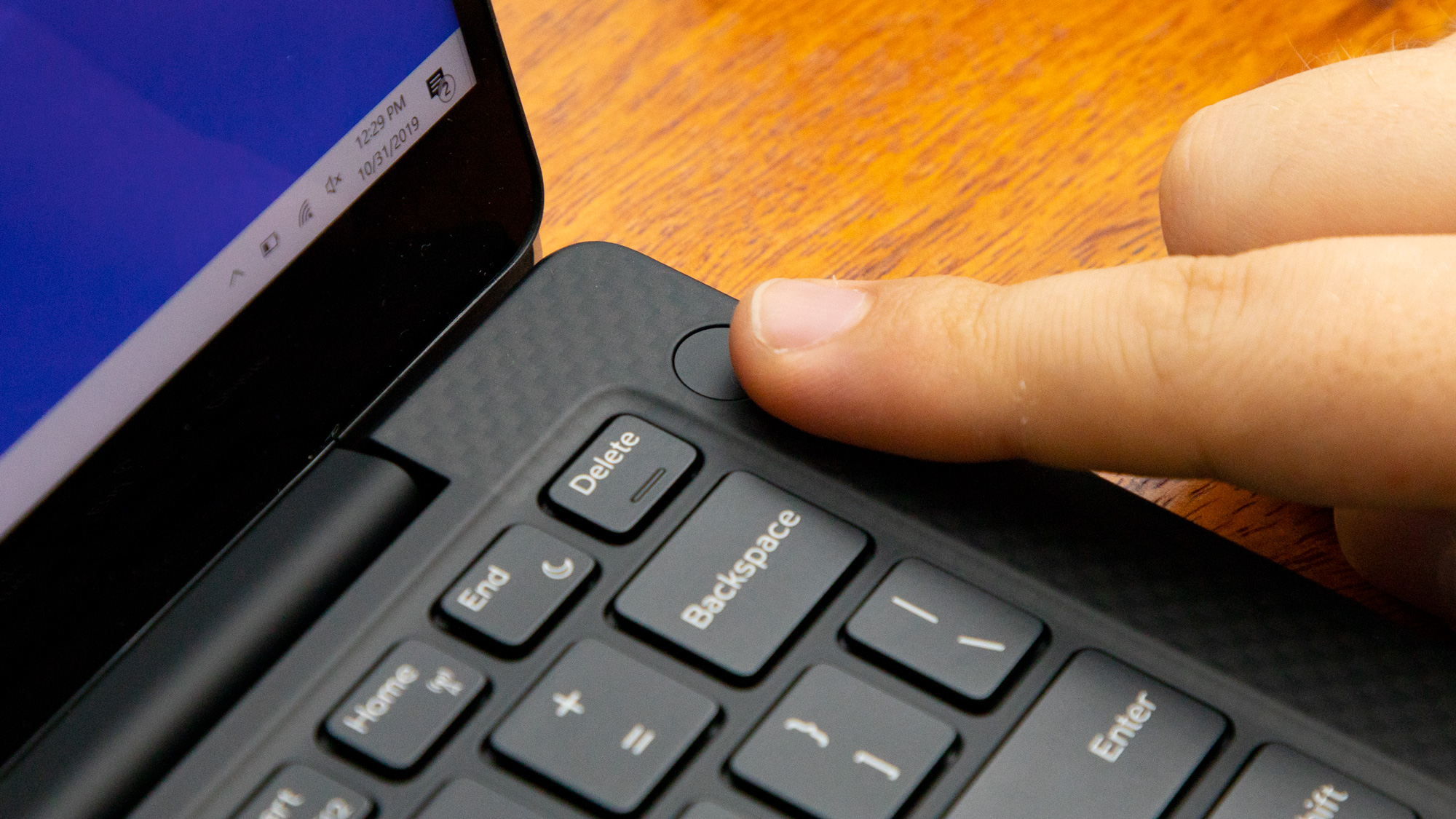
I typed at 122 words per minute with an accurate rate of 95% on the 10fastfingers.com typing test. That's faster than my typical 119-wpm speed with the same amount of typos.
MORE: Best Accessories for Your Dell XPS 13
I had no problems executing Windows 10 gestures like pinch-to-zoom and three-finger swipe to switch windows on the XPS 13's 4.1 x 2.4-inch Precision touchpad. My fingertips also appreciated the plushness of the soft-touch surface.
Dell XPS 13 battery life
The wait for a 4K laptop with all-day battery life continues.
The XPS 13 with a 4K display lasted for 7 hours and 56 minutes our battery test, which involves continuous web surfing over Wi-Fi at 150 nits.
That's not a poor result but we've come to demand runtimes of at least 8 hours from ultraportable laptops. The XPS 13 2-in-1 (10:57), the Spectre x360 with a 1080p display (12:07) and the MacBook Pro (8:41) all outlasted the XPS 13.
We haven't yet tested the 1080p XPS 13, but you should expect at least a few more hours of runtime.
Dell XPS 13 webcam
The XPS 13's webcam is average but it at least doesn't look up your nose. Dell solved our biggest complaint with the XPS 13 earlier this year by returning the camera to its rightful place above the display.
This new model keeps the camera location, which helps to overshadow the deficiencies of the tiny 0.08-inch lens. There wasn't a ton of noise in a selfie I snapped in our dimly lit office, but my face looked smudgy and the lights above me were blown out.
Dell XPS 13 heat
The Dell XPS 13 kept its cool after playing a 15-minute full-screen YouTube video. The laptop's touchpad warmed to 81 degrees Fahrenheit while the center of the keyboard peaked at just 89 degrees. Even the hottest area — the underside near the vent — didn't breach our 95-degree comfort threshold.
Dell XPS 13 software and warranty
Dell pre-installed a suite of programs on the XPS 13, most of which are worth keeping.
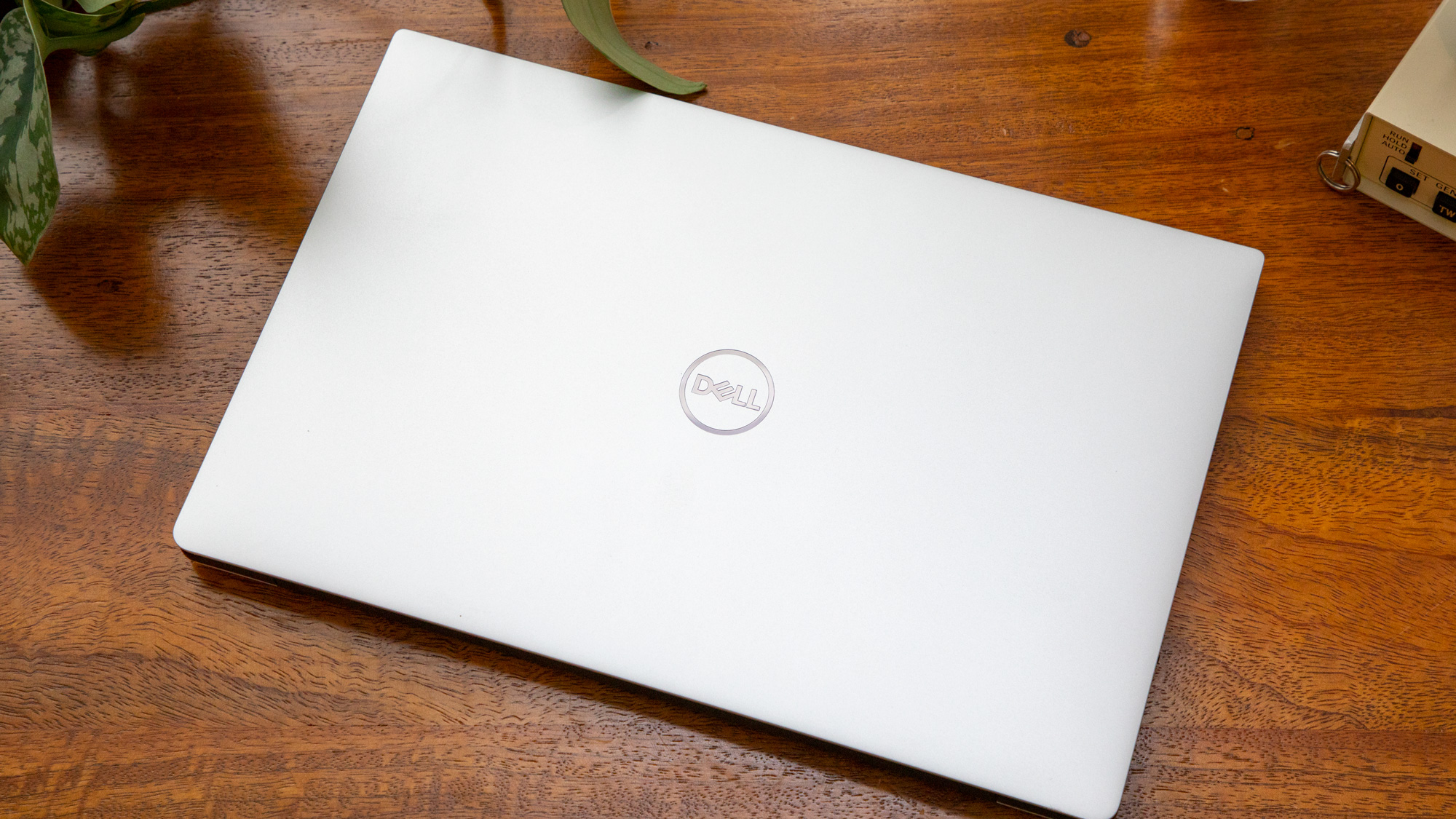
CinemaColor lets you quickly adjust the color temperature of your display to one of four default modes: Movie, Evening, Sports and Animation. Another interesting app is Dell Mobile Connect, which is similar to Your Phone in that you can wirelessly link your iOS or Android device to the XPS 13 to make calls, send texts and receive notifications.
Having owned an XPS 15 for a few years, I can vouch for Dell Update, which checks for the latest BIOS, driver, firmware and app updates. Other pre-installed software includes a power manager, a Killer Control Center for monitoring Wi-Fi performance and MaxxAudioPro, which lets you fine-tune audio playback.
MORE: The Best 13-Inch Laptops: Portable Notebooks for Any Budget
On top of all those apps are a couple of Windows 10 Home staples, like Farm Heroes Saga, Netflix and Microsoft Solitaire Collection.
Dell ships the XPS 13 with a one-year limited warranty. See how Dell fared in our Tech Support Showdown and Best and Worst Brands special reports.
Bottom line
Dell supercharged our favorite laptop by upgrading the XPS 13 with 10th-Gen Comet Lake processors. Combine that outstanding performance with a gorgeous 4K display; a premium, ultraportable chassis; and a decent keyboard, and it's no wonder the XPS 13 is our favorite laptop. The only real fault with the XPS 13 is the 4K model's below-average battery life, which is easily avoided by going with the 1080p version.
If you already own the previous XPS 13, you don't need to upgrade to this latest version. But if you're in the market for a new ultraportable laptop, you'd be hard-pressed to find a better laptop than the XPS 13 with 10thGen CPUs. If you prefer a 2-in-1 laptop, go with the XPS 13 2-in-1, which is essentially the XPS 13 with a flexible chassis. Another good option is the HP Spectre x360, although we haven't yet reviewed the new model with 10th-Gen chips.
Overall, the XPS 13's new 10th-Gen CPUs make the best laptop even better.
Dell XPS 13 (2019) Specs
| Bluetooth | Bluetooth 4.2 |
| Brand | Dell |
| CPU | 1.8-GHz Intel Core i7-8565U processor |
| Card Slots | microSD |
| Company Website | www.dell.com |
| Display Size | 13.3 |
| Graphics Card | Intel UHD Graphics 620 |
| Hard Drive Size | 1 TB |
| Hard Drive Speed | n/a |
| Hard Drive Type | PCIe SSD |
| Highest Available Resolution | 3840 x 2160 |
| Native Resolution | 3840 x 2160 |
| Operating System | Windows 10 Pro |
| Optical Drive | None |
| Optical Drive Speed | n/a |
| Ports (excluding USB) | Headset, security lock slot, Thunderbolt 3, Thunderbolt/mini DisplayPort, USB Type-C |
| RAM | 16GB |
| Size | 11.9 x 7.8 x 0.3~0.46 inches |
| Touchpad Size | 4.1 x 2.3 inches |
| USB Ports | 3 |
| Warranty/Support | 1-year limited warranty |
| Weight | 2.69 pounds |
| Wi-Fi | 802.11ac |
| Wi-Fi Model | Killer 1435 802.11ac 2x2 |
Phillip Tracy is the assistant managing editor at Laptop Mag where he reviews laptops, phones and other gadgets while covering the latest industry news. After graduating with a journalism degree from the University of Texas at Austin, Phillip became a tech reporter at the Daily Dot. There, he wrote reviews for a range of gadgets and covered everything from social media trends to cybersecurity. Prior to that, he wrote for RCR Wireless News covering 5G and IoT. When he's not tinkering with devices, you can find Phillip playing video games, reading, traveling or watching soccer.
